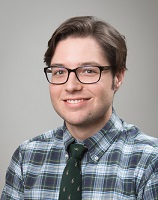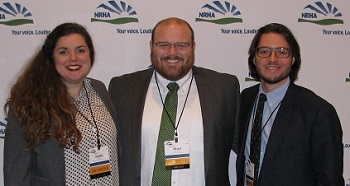Rural round up: Jesse Rockmore, medical student, writes

I am Jesse Rockmore, a 4th year osteopathic medical student in the United States. As a member of the National Rural Health Association Student Constituency Board for three years and the current Chair of the group, I am excited to share my personal experiences in rural health and the goals of the NRHA Student SG group with rural physicians worldwide.
I am originally from a small town in the lower Appalachian Mountains in Georgia. Poor access to primary and surgical care in my small town compelled me to pursue a career in rural health care.
I chose osteopathic medicine because of the rich history of DOs (Doctors of Osteopathic Medicine) in rural America. Osteopathic medicine is a distinct form of medical practice originating in the United States. Osteopathic physicians, not to be confused with osteopaths, are fully licensed physicians in all 50 states of the United States. “Osteopath” is a term used internationally to denote practitioners that only practice musculoskeletal medicine like chiropractic care. While the terminology can be confusing, “osteopath” is a term used less in the United States and “osteopathic physician” is preferred. Osteopathic medical students complete an undergraduate degree and attend a college of osteopathic medicine four years and then complete residency training in their desired field.
DOs have practice rights in more than 50 countries worldwide. An osteopathic physician can be a family medicine doctor, a pediatrician, a surgeon, a urologist, a cardiologist, or any other medical specialty available to medical doctors. Osteopathic medicine was born in the 1800s when A.T. Still felt the contemporary treatment of diseases was causing more harm than healing. In the United States and in some countries around the world, osteopathic physicians practice the full scope of medicine in the same capacity as a medical doctor. Osteopathic physicians are still trained in the musculoskeletal medicine that began in the 1800s, and they have incorporated all aspects of pharmacology and surgical training that medical doctors practice.

At the center of our training in medicine and surgery is the osteopathic philosophy. The term “holistic” is used to describe our philosophy of care. To an osteopathic physician, this word has a precise definition. Osteopathic physicians view their patients comprised of the mind, the body, and the spirit. Osteopathic physicians believe medical and surgical care is accomplished by creating a partnership with the patient. The partnership depends on viewing the patient as the totality of the mind, the body and the spirit.
Photo: Jesse (right) at the 2016 at the NRHA conference with two previous board members.
I attend Edward Via College of Osteopathic Medicine (VCOM) in Spartanburg, South Carolina. My college has a mission to train physicians for return to rural Appalachia. I chose VCOM because of their dedication to the Appalachian people. A portion of my medical education takes place in a rural area. Ideally, more of my clinical education would be in rural areas, however, the healthcare infrastructure to support rural education is not available everywhere in the United States. I hope to build that infrastructure so more students gain exposure and education in rural America.
In closing, I would like to share a quote from A.T. Still, the founder of osteopathic medicine,
“
To find health should be the object of the doctor. Anyone can find disease.”
I am encouraged that despite borders and differences in education systems, we all have the common desire to provide care to those born to rural and to remote areas. I know our efforts will encourage others to join us in helping rural humankind find health rather than disease.